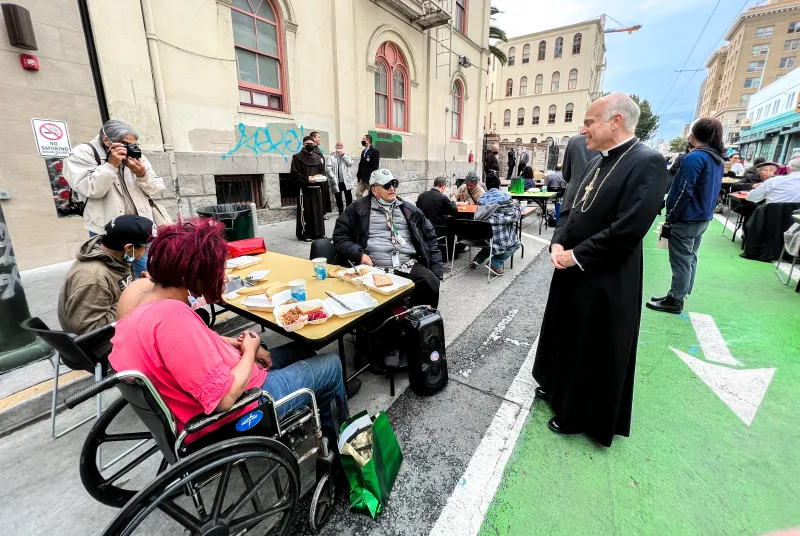
Denver Newsroom, Feb 18, 2022 / 16:15 pm (CNA).
On Thursday, the Catholic Church in Poland shared a photo commemorating the 81th anniversary of St. Maximilian Kolbe’s arrest by the Nazis. The image, the last one taken of the saint before his final arrest, was notable for what it didn’t show…Kolbe’s signature long beard.
By the time the photo was taken, Kolbe had already been arrested by the Nazis once, but was clearly resolved to continue his nationwide evangelization efforts. The monastery he had established at Niepokalanów, 25 miles west of Warsaw, had become a major Catholic publishing center.
The beard with which Kolbe is often pictured is notable for several reasons, one of which was the fact that not many of his Franciscan counterparts in Poland sported them. He shaved his signature beard in order to blend in with his fellow Franciscans, and with society at large.

The second reason is that Kolbe’s beard is the only first-class relic that exists of him. The rest of his body was incinerated in the ovens of Auschwitz after he was murdered by the Nazis in 1941.
Father James McCurry, a Conventual Franciscan and minister provincial of the Our Lady of the Angels Province, gave a homily in 2016 commemorating the 75th anniversary of Kolbe’s martyrdom in which he mentioned the saint’s beard.
McCurry, author of the book “Maximilian Kolbe: Martyr of Charity,” said that Kolbe chose to keep the beard upon his return from six years of missionary work in Japan. In those days, it was customary for missionaries to grow long beards, and Kolbe wanted to keep it as a reminder of his missionary days, and as a reminder to always be a “missionary” of the Gospel.
McCurry said Kolbe’s beard made him unusual among his Conventual Franciscan counterparts, who generally did not wear them. Kolbe’s fame was spreading among Poland thanks to his publishing work, and his unique beard helped him to stand out all the more.
It was for this reason that Kolbe eventually, after the 1939 Nazi invasion of Poland, made the decision to shave it, McCurry said, so as not to stand out. Kolbe’s founding of the Militia Immaculata (MI), an evangelization movement identifying with Mary, put him high on Nazi watchlists.
One book on his life offers this quote from the saint: “Beards provoke the enemy who rapidly is approaching our friary. Our Franciscan habits also will provoke him. I can part with my beard. I can’t sacrifice my habit.”
After a fellow brother cut off Kolbe’s beard for him, the brother at first tried to save the beard, but Kolbe objected, and told him to throw it in the stove. So, obediently, the brother threw it into the stove, but the fire was not lit, so the brother later retrieved it and stored it in a pickle jar.
Today, Kolbe’s beard is his only surviving first-class relic.
Father McCurry was also a friend of Franciszek Gajowniczek, the man for whom Kolbe laid down his life at Auschwitz in late July 1941, following his arrest on Feb. 17.
Gajowniczek was one of the ten men selected to be executed in reprisal for one prisoner’s escape from the barracks. He cried out, “What will happen to my wife and children?” And in response, Father Kolbe stepped forward and offered to take his place. The ten were placed, naked, in a starvation chamber.
All ten of those condemned that day died eventually; six starved, and the deaths of the rest, including Father Kolbe, were hastened by an injection of carbolic acid.
If you value the news and views Catholic World Report provides, please consider donating to support our efforts. Your contribution will help us continue to make CWR available to all readers worldwide for free, without a subscription. Thank you for your generosity!
Click here for more information on donating to CWR. Click here to sign up for our newsletter.





Leave a Reply